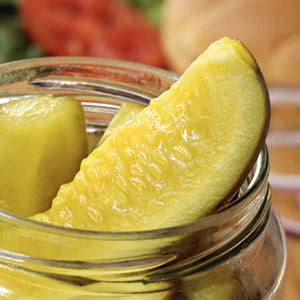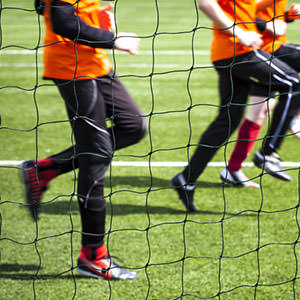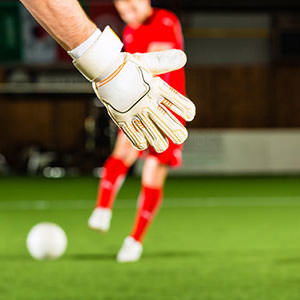12 Great Tips on How to Prevent Leg Cramps During Soccer Practice

Whether you love or hate soccer, there is one thing that everyone can admit. Soccer is one of the most physically demanding athletic competitions out there. For 90 minutes participants are asked to be on constant alert on the field, keep their bodies moving and be prepared to explode from a jog into a full sprint that could cover 50 yards or more of the pitch.
Many soccer practices differ little from the game, after all the most successful teams will practice the way they play. As much as an athlete’s heart desires to keep the pace, sometimes the body cannot keep pace and muscles begin to cramp up. The following are tips to help prevent cramps before, during and after soccer practice.
1. Stay Hydrated with Water
Cramps most often occur as a result of physical exertion and the loss of fluid in the body. Make sure to evenly consume water when your body is demanding it throughout practice and you’ll ensure that your body maintains a balanced level of hydration.
2. Consider Electrolyte drinks
Water is the common go to for hydration, but when extensive exertion leads to higher levels of fluid loss in the body water might not be the best solution. When the body loses fluids, it is not just losing water but also potassium, sodium and other vital nutrients. Electrolyte drinks, such as Gatorade and other specialized fluids, do more to replace these lost nutrients than water.
3. Salt Tablets
For those experiencing cramps during practice, there are a number of approaches that can be taken to minimize or eliminate their occurrence.
Chewing salt tablets helps to replenish sodium in the body and is often used by long-distance runners to combat cramps.
4. Pickle Juice
Rather than chew on salt tablets or consume water/electrolyte drinks, it is becoming increasingly common for athletes to consume pickle juice. Much like a salt tablet, pickle juice has a high sodium content and helps replenish this vital nutrient in muscles.
5. Eat a Banana
There are several preventative measures that can be taken within an hour to 90 minutes of practice starting that can prepare the body combat cramps during practice. Bananas are another favorite among endurance athletes because they possess a high dose of potassium. Potassium is another vital nutrient lost during physical exertion that can lead to muscle cramps.
6. Don’t Shy Away from Carbs
The problem is that, just like other nutrients, carbs play a vital role and are healthy in moderation.
Carbs are the primary source of fuel for our bodies and play a vital role in powering muscles through extreme exertion.
Try eating a peanut butter sandwich or other carb-heavy snack within an hour to 90 minutes of practice start to ensure the body has the carb stores it needs to survive practice without depletion.
7. Eat a Balanced Diet
The most effective dietary preventative measure athletes can take is to eat a balanced, healthy diet. For most serious soccer athletes, the exertion of practice is going to happen on a predictable schedule between games.
The best preventative bet is to consume a balanced diet each day that is high in critical vitamins such as A, B, C and D. This helps ensure the body is ready ahead of each practice for the pending exertion.
8. Train Outside of Practice
Some instances of muscle cramps are going to be the result of the body not being prepared for the level of exertion thrown at it in practice.
When possible, work in a separate training regimen that incrementally increases over time to get the body accustomed to the level of performance expected.
9. Warm-up
Many athletes will suffer from cramps because their body simply wasn’t ready to work hard. Take time before practice to warm up the muscles of the body before straining them over the course of 45 to 90 minutes of practice.
A good warm up will include light stretching, but also some light movement and loosening of the muscles through jogging, jumping jacks or other simple movements.
10. Don’t Forget to Cool Down
Just as the body needs to warm up before being asked to perform for upwards of 90 minutes, it is important to allow the body time to cool down as well. As tempting as it is to sit down when offered a break at practice, try to walk around a little and allow the muscles to cool down properly before taking a seat.
Don’t expect to jump back up and into the action either. Get up and move around a bit to warm the muscles back up before returning to action.
11. Acclimate to the Environment
Sometimes cramps can be the result of the environment of the practice as much as the nutrients in the body.
Warmer climates will sap the body of nutrients faster, especially when physical exertion is taking place.
When practicing in a different environment for the first time, take a few minutes to get used to the new environment and consider increasing water and carb intake beforehand.
12. Rest
Most important of all, take time to rest when possible. This can mean to allow the muscles some time after practice to recover before the next practice, but it can also mean during practice. When the coach offers a 10-15 minute break, don’t spend the whole break up and about. Give the muscles a chance to “catch their breath” by taking a load off for a few minutes.















